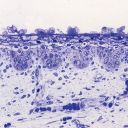Distribution Of Calcium In The Body
Distribution of calcium in the body
Bone calcium (99%)
Ca^2+ and PO4^3+ form hydroxyapatite
Plasma calcium
Diffusible pool
~50% of plasma calcium is free/unbound ionic Ca2+ (physiologically important form)
~10% of plasma calcium is complexed with small molecular weight compounds (citrate, phosphate)
Non-diffusible pool
~40% of plasma calcium is bound to calcium-binding proteins and plasma proteins (albumin)
The body utilises plasma albumin-bound calcium as a circulating reserve
More Posts from Bethiniancorpuscle and Others
Basic pharmacology of neuromuscular junction
ACh acts on N2 receptors (ligand-gated Na+/K+ receptors)
Block Na+ channels that propagate nerve impulse - local anaesthetics (lidocaine), tetrodotoxin
Inhibit ACh release - tetanus toxin, botulinum toxin
Competitive antagonists - vecuronium
N2 agonists - suxamethonium
Flaccid paralysis
Only cleared by plasma cholinesterase
Reversible anticholinesterases - edrophonium, neostigmine, physostigmine
Block activity of AChE
Diagnose and treat myasthenia gravis and treat glaucoma respectively
Irreversible anticholinesterases - organophosphates (pesticides, nerve gases)
Long-lived flaccid paralysis
Treat with pralidoxime within 10 minutes - cleaves OP-AChE complex
Haemosiderin staining
"Haemosiderin staining" describes orange/red/brown skin hyperpigmentation caused by haemosiderin (an iron-containing pigment found in blood) leaking into the skin.
Causes:
Chronic venous insufficiency (in lower legs)
Skin inflammation
Trauma e.g. wound, fracture, surgery
Pigmented purpuric dermatoses
Haemochromatosis
Haemosiderin staining may be exacerbated by anticoagulant use as this increases extravasation (leakage) of red blood cells into the skin.
See an example here.
Carpal bones mnemonic
So Long Till Pinky, Here Comes The Thumb
Scaphoid
Lunate
Triquetrum
Pisiform
Hamate
Capitate
Trapezoid
Trapezium
(going anti-clockwise in this diagram)

Cranial nerves mnemonic
On, on, on, they travelled and found Voldemort guarding very ancient horcruxes.
Olfactory, optic, oculomotor, trochlear, trigeminal, abducens, facial, vestibulocochlear, glossopharyngeal, vagus, accessory, hypoglossal.
On - Olfactory nerve (CN I)
On - Optic nerve (CN II)
On - Oculomotor nerve (CN III)
They - Trochlear nerve (CN IV)
Travelled - Trigeminal nerve (CN V)
And - Abducens nerve (CN VI)
Found - Facial nerve (CN VII)
Voldermort - Vestibulocochlear nerve (CN VIII)
Guarding - Glossopharyngeal nerve (CN IX)
Very - Vagus nerve (CN X)
Ancient - Accessory nerve (CN XI)
Horcruxes - Hypoglossal nerve (CN XII)
clearance = (urine concentration x urine volume passed over time) / plasma concentration
the only useful thing my prof ever taught me for the renal physiology portion of my physiology course is that clearance is calculated by the equation “pissing under the sun” ( C = UV/P)
I don’t know what stage of the semester you’re at right now but let someone in exam period (me) give you some advice on revision: Start early. Early as in NOW. Start now to not end up like me
Management of acute MI
Reduce anginal pain
Morphine (+ anti-emetic)
Oxygen
Nitrate
Initiate reperfusion
Anti-platelet (aspirin, clopidogrel)
Thrombolytic (rtPA)
Primary angioplasty (PTCA)
Anticoagulant (heparin)
Protect myocardium
Beta-blocker
ACE inhibitor
Secondary prevention
Aspirin
Lipid-lowering (statin)
Lifestyle

Helpful mnemonic foe MI treatment.
Causes of Acute Pancreatitis
In the UK and US, the main causes are gallstones and alcohol.
Use the mnemonic 'I GET SMASHED':
Idiopathic
Gallstones
Ethanol
Trauma
Steroids
Mumps / Malignancy
Autoimmune
Scorpion stings
Hypercalcaemia / Hypertriglyceridaemia / Hypothermia
ERCP
Drugs (including azathioprine, mesalazine, bendroflumethiazide, furosemide, steroids, sodium valproate)
Oedema - pitting vs non-pitting
Oedema is swelling due to excess fluids in tissues.
In pitting oedema, pressing on the affected area leaves an indentation (that persists after removing the pressure). In non-pitting oedema, the area feels firm to touch and does not form indentations.
Pitting oedema:
The excess fluid is mainly composed of water
Commonly caused by heart failure, venous insufficiency, or nephrotic syndrome
Non-pitting oedema:
The excess fluid consists of water WITH protein and salts
Usually indicates a condition of the thyroid / lymphatic system
Different types:
Lymphoedema is due to a build-up of lymphatic fluid (e.g. due to a tumour blocking lymphatic flow / after removal of lymph nodes).
Myxoedema occurs in hypothyroidism and often affected the pretibial or periorbital area.
Angioedema is localised swelling of the skin and is usually due to allergic reactions. It typically affects the face, tongue, larynx, abdomen, arms, and legs. When the larynx is affected, it may affect breathing, which is an emergency!
Lipoedema is when fat accumulates in subcutaneous tissues - it usually affects the legs/buttocks and almost exclusively occurs in postpubertal females (not the same as cellulite!)
If patients present with oedema, it's always important to test if it's pitting or non-pitting as this helps to determine the cause and correct treatment!
Common ototoxic medications
"FAV Q&A"
Furosemide (and other loop diuretics) Aminoglycosides Vancomycin Quinine Aspirin
-
 yeleen-sayansi reblogged this · 3 years ago
yeleen-sayansi reblogged this · 3 years ago -
 bricky-b liked this · 3 years ago
bricky-b liked this · 3 years ago -
 nocturnalsky28 liked this · 3 years ago
nocturnalsky28 liked this · 3 years ago -
 herpainterlover reblogged this · 3 years ago
herpainterlover reblogged this · 3 years ago -
 peterpans-shadow liked this · 3 years ago
peterpans-shadow liked this · 3 years ago -
 sam-the-panda-hero liked this · 3 years ago
sam-the-panda-hero liked this · 3 years ago -
 the-orangeauthor liked this · 3 years ago
the-orangeauthor liked this · 3 years ago -
 docresa reblogged this · 3 years ago
docresa reblogged this · 3 years ago -
 riotnchaos liked this · 3 years ago
riotnchaos liked this · 3 years ago -
 study-of-dreams liked this · 3 years ago
study-of-dreams liked this · 3 years ago -
 sakura--hanami liked this · 3 years ago
sakura--hanami liked this · 3 years ago -
 moneystcroix liked this · 3 years ago
moneystcroix liked this · 3 years ago -
 imperadrice liked this · 3 years ago
imperadrice liked this · 3 years ago -
 bethiniancorpuscle reblogged this · 3 years ago
bethiniancorpuscle reblogged this · 3 years ago
